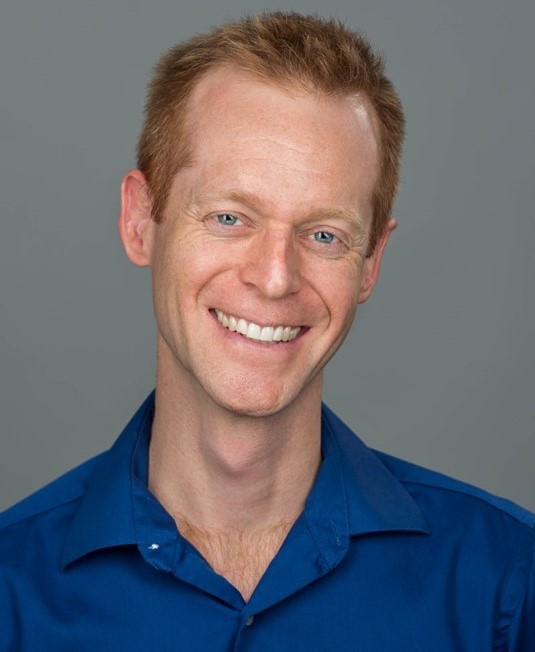
This is an article about personal growth and change, but before we can get to that, we need to look at a really cool insight about biology and creativity.
As discussed in my article about where new ideas come from, there is a parallel between biological innovation and human innovation. Species evolve either by genetic mutation or genetic combination, and our ideas evolve when they get modified or when they combine with other ideas.
In Where Good Ideas Come From, Steven Johnson explains another important parallel between biological creativity and human creativity: the adjacent possible. (All the quotes in this article come from Johnson’s excellent book.)
The Adjacent Possible
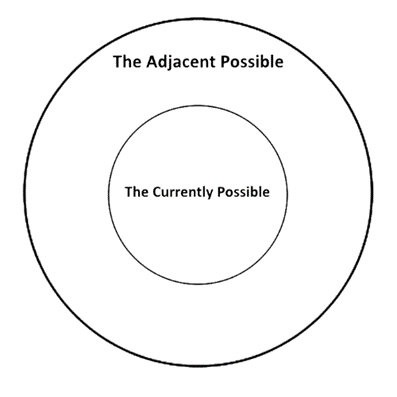
Nature can only build upon what already exists.
Thus, when life first began, the chemical building blocks of life were sufficient to make primitive cells and genes, but they were not sufficient to make complicated structures like wings and eyes. But billions of years later, the precursors of wings and eyes were available, and so those structures could evolve.
Each expansion of biological complexity has used the building blocks of previous generations. Biology’s “adjacent possible” is the range of traits and organisms that can potentially evolve using life’s current set of building blocks.1
The Adjacent Possible and Human Innovation
The same model applies to human creativity.
When our ancestors first began making wood and stone tools, spears and hand axes could be fashioned using the set of ideas we already had, but rifles and automobiles were out of the question. For early humans, cave art was part of the adjacent possible, but Picasso and Escher were not.
As millennia went by, each generation passed its ideas onto the next, and we kept making incremental improvements and additions, and the adjacent possible of ideas expanded. The people of the 20th century weren’t more creative or more intelligent than the hunter-gatherers of the stone age, but they had access to a far greater array of ideas to work with.1
Here’s an oversimplified example of humanity’s adjacent possible from the 1920s:
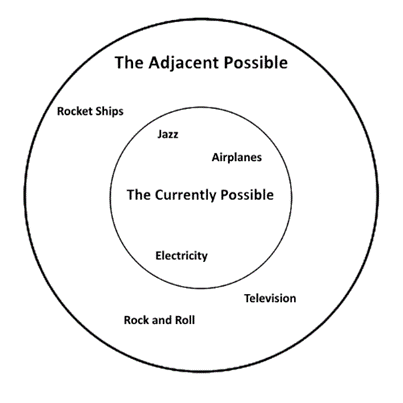
“The history of life and human culture, then, can be told as the story of a gradual but relentless probing of the adjacent possible, each new innovation opening up new paths to explore.” 1
Opportunities and Limitations
The adjacent possible is a realm of creative opportunity. It contains all the new ideas that could arise, given what we already know. Some of these new ideas are improvements to existing ideas. Others are combinations of existing ideas. Innovation is the act of exploring the adjacent possible.
Yet at the same time, the adjacent possible is inherently limited. We can only work with the ideas we have today. A 15th-century inventor could not invent the light bulb – essentially an electric lamp – because, while they did know about lamps, they did not know about electricity.
“The adjacent possible is a kind of shadow future, hovering on the edges of the present state of things, a map of all the ways in which the present can reinvent itself. Yet it is not an infinite space, or a totally open playing field. … What the adjacent possible tells us is that at any moment the world is capable of extraordinary change, but only certain kinds of changes can happen.” 1
So yes, the new ideas we can create are limited by the building blocks that are currently available, but this isn’t necessarily a bad thing. As I’ve argued, constraints can actually make creativity easier. The adjacent possible narrows down the range of possibilities to a level that is manageable. Your next idea is easier to conceive of because it can only be drawn from the adjacent possible. The first step is easier to take because you’re not overwhelmed by infinite choice.
Expanding the Adjacent Possible
As the history of life and of humans makes clear, the adjacent possible is not fixed. It can be expanded. As we move from our current reality into the adjacent possible, the things that used to be in the adjacent possible become part of our current reality, and the things that used to be only distantly possible are now in our adjacent possible.

“The strange and beautiful truth about the adjacent possible is that its boundaries grow as you explore those boundaries.” 1
And there is another realm, outside of the distantly possible, that we might label “not yet imaginable.”

Stretching the Limits of Our Imagination
For a novelist in the 1700s, the world of Star Trek was unimaginable. Everything in that show was too far beyond the adjacent possible. But by the late 1960s, when we were sending rockets and men into space, a show about people exploring the galaxy on a spaceship was very much conceivable, even if that technology was only distantly possible.
Notice how, when talking about that which is not currently possible, I didn’t say “impossible.” I said “distantly possible.” Although our 15th-century inventor could not have created a light bulb, it would be wrong to say that such an invention was impossible. Similarly, due to the limitations of our current set of ideas, we may be unable to imagine futures that could nonetheless become reality in our lifetimes.
Just 100 years ago, most people would have said it was impossible for humans to go to the moon, but they were wrong. And a child of the 1890s would probably have been unable to imagine a spaceship, though they might have lived to see one.
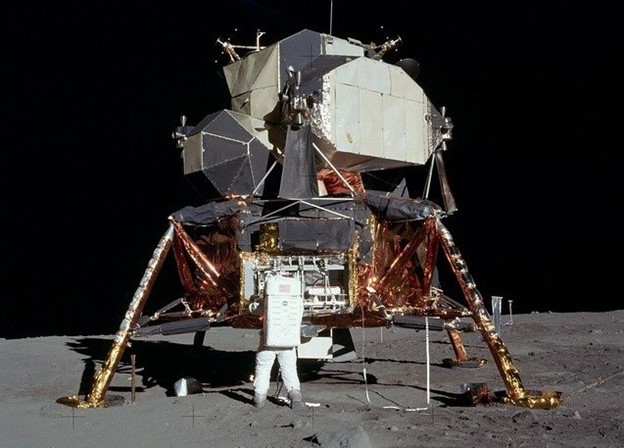
There are many technologies that are out of reach today that will become real within your lifetime. Similarly, there may be new ways of organizing human societies that seem impossible at the moment that may eventually become the norm.
Realistic Optimism
Understanding that the adjacent possible can expand is a great example of realistic optimism. We can imagine things well-outside of the adjacent possible, as science fiction authors often do. And then we can use these ideas as a guiding vision for work done in the real world, moving step by step through a series of adjacent possibles to arrive at what was once a fantastical vision.

What is possible for humanity is unknowable, but we can be sure it is far greater than what we can currently imagine. And the same is true for our own potential. We don’t know what we’re truly capable of because much of our potential lies far beyond our current adjacent possible. With that in mind, let’s take this idea and apply it to personal growth.
The Adjacent Possible in Your Life
“All of us live inside our own private versions of the adjacent possible. In our work lives, in our creative pursuits, in the organizations that employ us, in the communities we inhabit – in all these different environments, we are surrounded by potential new configurations, new ways of breaking out of our standard routines. … The trick is to figure out ways to explore the edges of possibility that surround you.1
The adjacent possible in your life represents all the paths you could take based on your current circumstances. It represents all the future selves you could become based on your current abilities. It represents your short-term potential for behavioral change and personal growth.
Your long-term potential lies in the distantly possible and in the not yet imaginable. You gain access to those realms by expanding into your adjacent possible. As you do so, you create an even larger adjacent possible to expand into yet again. Each door you open reveals three more.
This is why, when I talk about your incredible human potential, I don’t merely speak of unleashing that potential but also of discovering that potential. You don’t know what you’re capable of until you start moving down the path of becoming better. You don’t know what is possible for you until you begin expanding into your adjacent possible.
Career
You move into the adjacent possible in your career by learning new skills and taking on new challenges. You can’t go from an entry-level position to upper management overnight. You have to work through a series of adjacent possibles by accumulating career capital: knowledge, experience, and relationships.
Similarly, if you don’t have a career – or if you’re considering changing careers – you won’t be able to land your dream job immediately. You’ll have to work your way up to it.
Let’s look at this through the lens of the ikigai diagram:
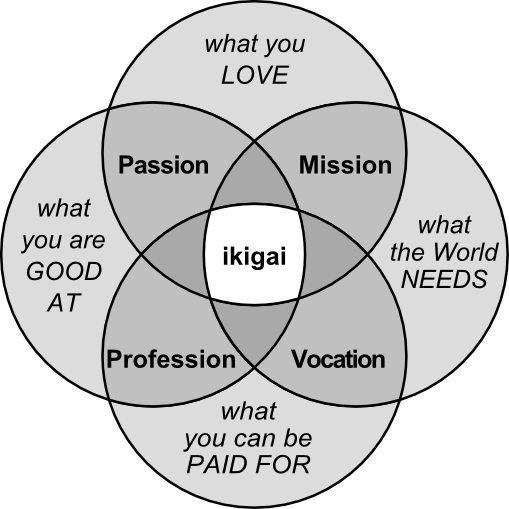
If you’re currently spending your time in one of the outer circles, the point of overlap between all four – “ikigai” – isn’t in your adjacent possible. It’s not available to you yet. To reach that, you have to work your way to the center.
Let’s say, for example, you love being in nature and taking photographs, and you’d like to transform this into an ikigai. You’re currently playing around in the “What you love” circle, and your adjacent possible includes the intersections with the two neighboring circles. So you study photography and practice your skills until you’re legitimately good at it, transforming it into a passion.
Now your adjacent possible includes the intersections with the “What the world needs” and “What you can get paid for” circles. So you decide to focus on photography that highlights parts of nature that are threatened and donate images to environmental advocacy groups, moving into the intersection of passion and mission. Do that well enough, and you may get hired to take photos for one of those groups.
By moving from adjacent possible to adjacent possible, you can turn a hobby into a dream job.
Relationships
When I first moved to Seattle, my most important personal goal was to find a loving, long-term relationship. What I didn’t realize at the time, however, was that this kind of romantic love was not in my adjacent possible.
At the time, I was a mess. I was an addict. I was depressed. My professional life had no direction. And I didn’t love myself. In other words, I wasn’t ready for romantic love. I couldn’t care for myself, so there was no way I could truly care for someone else. Before romantic love could enter my adjacent possible, I had to expand.
I got sober. I created a career for myself. I developed strong self-care habits that not only improved my life but also cultivated self-love. Once I had done that, romantic love entered my adjacent possible. And when I eventually met my partner, I was ready.

Behavioral Change
The changes I made did not happen overnight. Gradually, over the course of several years, I eliminated bad habits and cultivated good ones. My physical and mental health improved slowly and steadily, which made it easier to continue moving down the path of positive behavioral change.
So if you’re thinking about changing your lifestyle and revamping your habits, keep in mind that massive, instantaneous change is not in your adjacent possible, but incremental growth is. You can change one habit this month, and another habit next month. Or you can just try making three better choices today.
Each step you take in the right direction opens up more options within your adjacent possible. You can radically change your life, but you have to be patient. Also, it helps to have a guide when you’re working on behavioral change, so consider using a habit coach.
Mental health
When someone is severely depressed, they cannot even imagine being happy. Joy and contentment are so far beyond their adjacent possible as to be not yet imaginable. But that does not mean they’re impossible; it just means they are distantly possible.
If you are in the depths of severe depression, being slightly less depressed is in your adjacent possible. If you can get there, being even less depressed opens up as a possibility. Eventually, being not depressed at all enters your adjacent possible, and happiness becomes not only conceivable but very much within reach. (Here is a collection of resources for overcoming depression.)
Creating Your Future
Take a minute to imagine how you’d like your life to be in five years. If the life you’re picturing is well outside of your current adjacent possible, don’t be discouraged. You can create that future for yourself.
But you won’t get there by staring dreamily at a vision board. You’ll get there by using that ideal future as a guiding star in the work you do day-to-day.
Remember, you are a co-creator of your reality. You don’t just live within the circumstances you’ve been given – you also help shape those circumstances.
Move forward, with hope and patience, into your adjacent possible. When you do that, you not only expand the range of possibilities for your life, but you expand yourself as well.
1 Johnson, Steven. Where Good Ideas Come From: The Natural History of Innovation. Riverhead Books, 2007.
